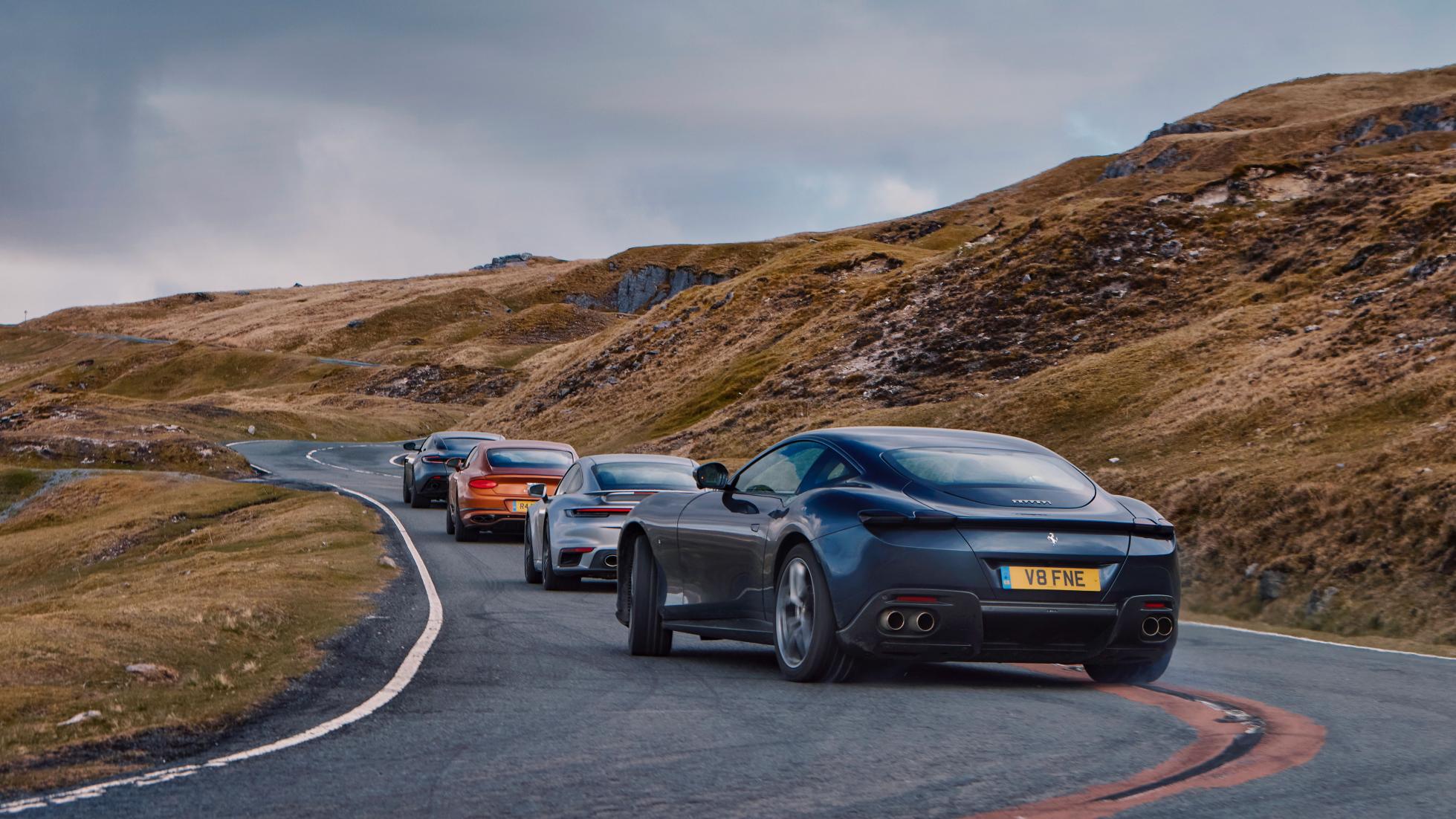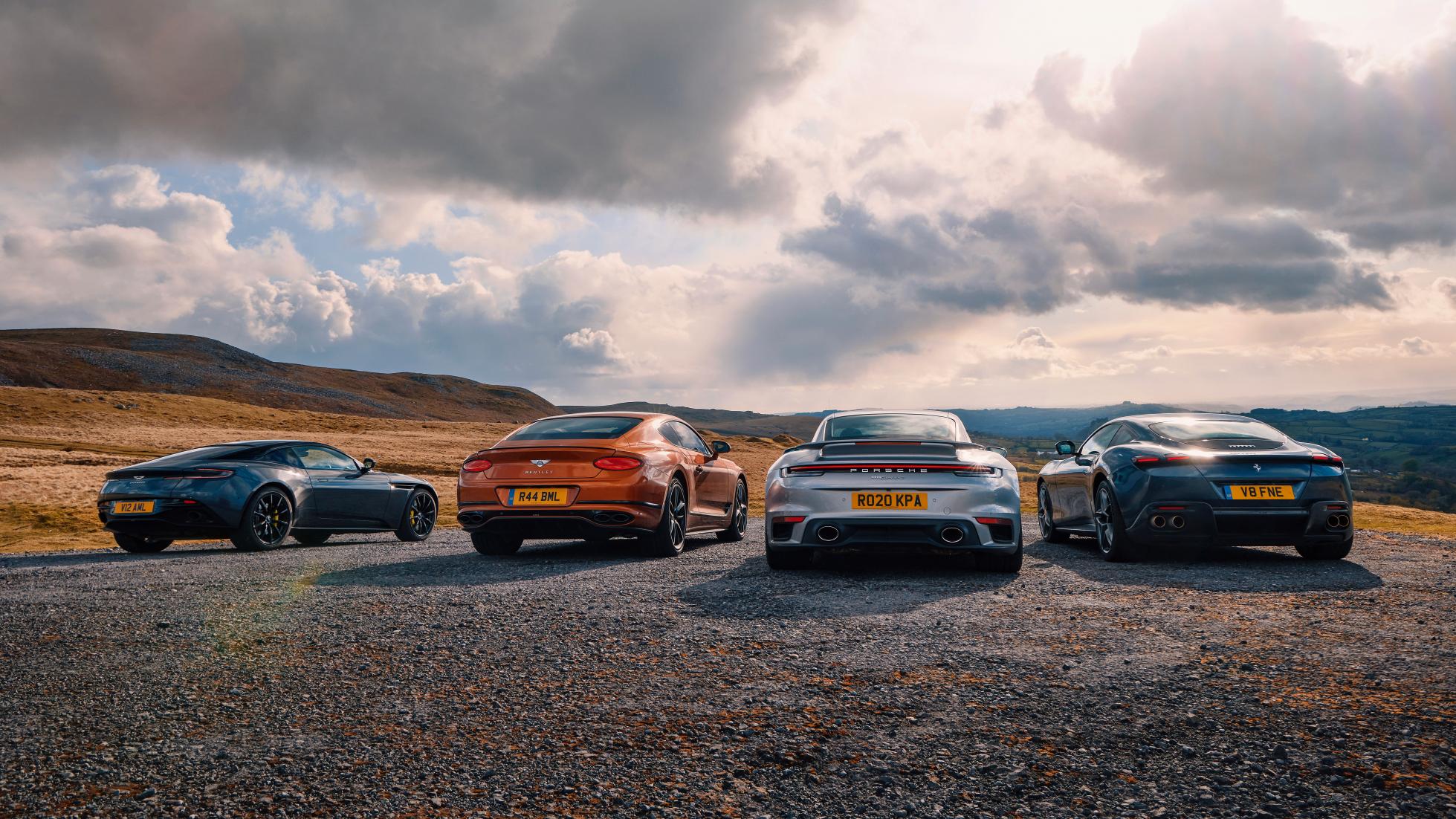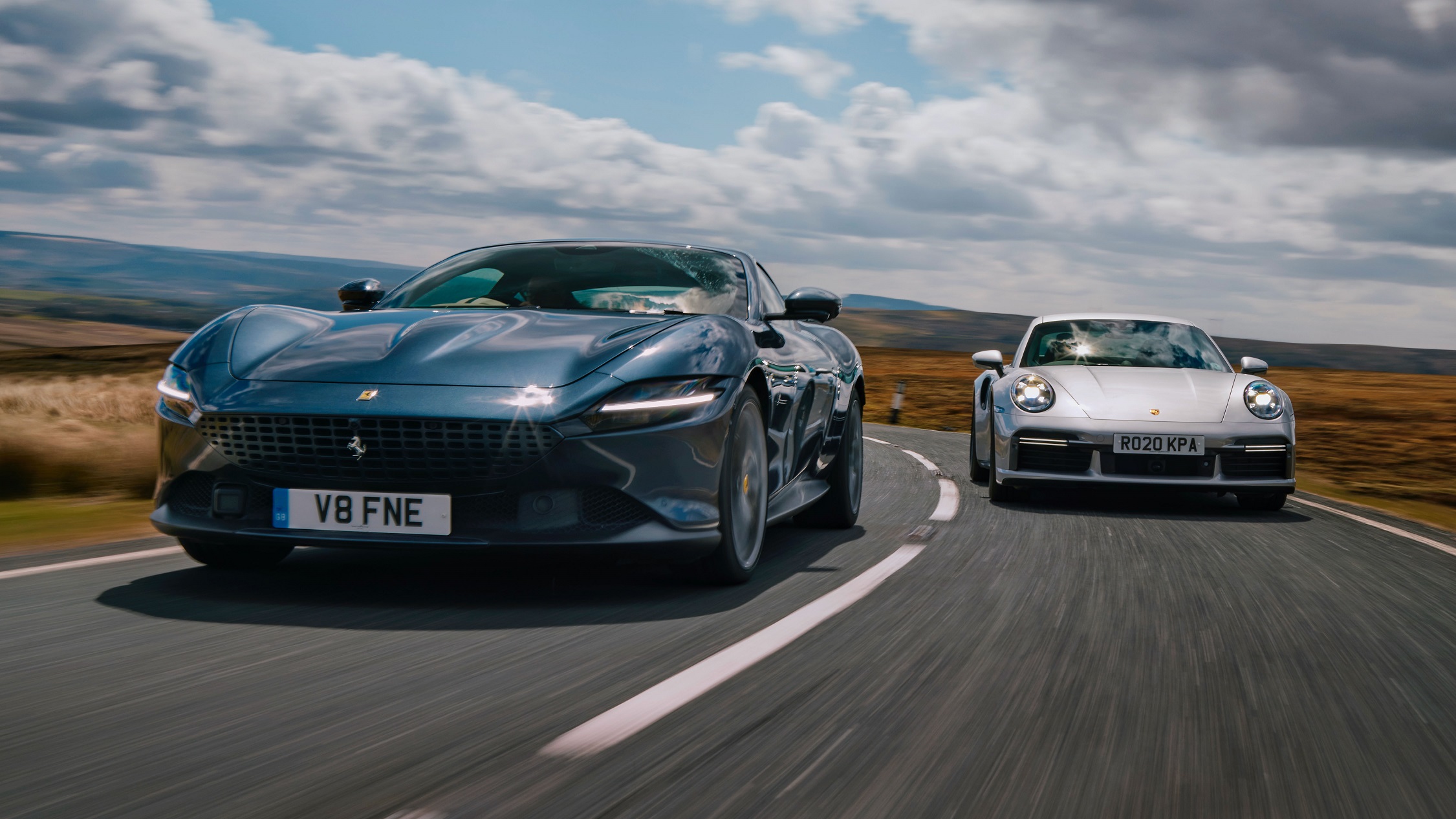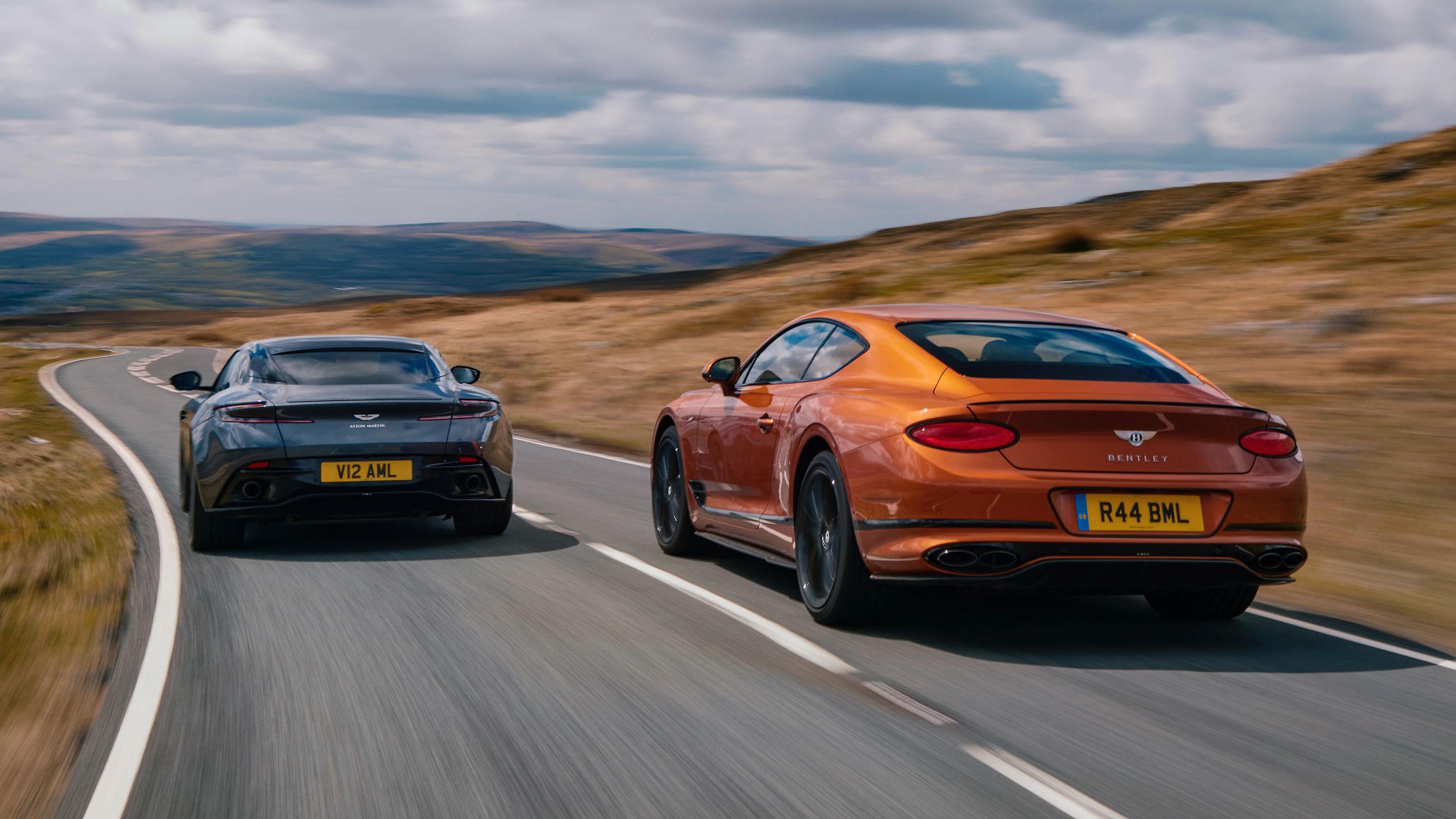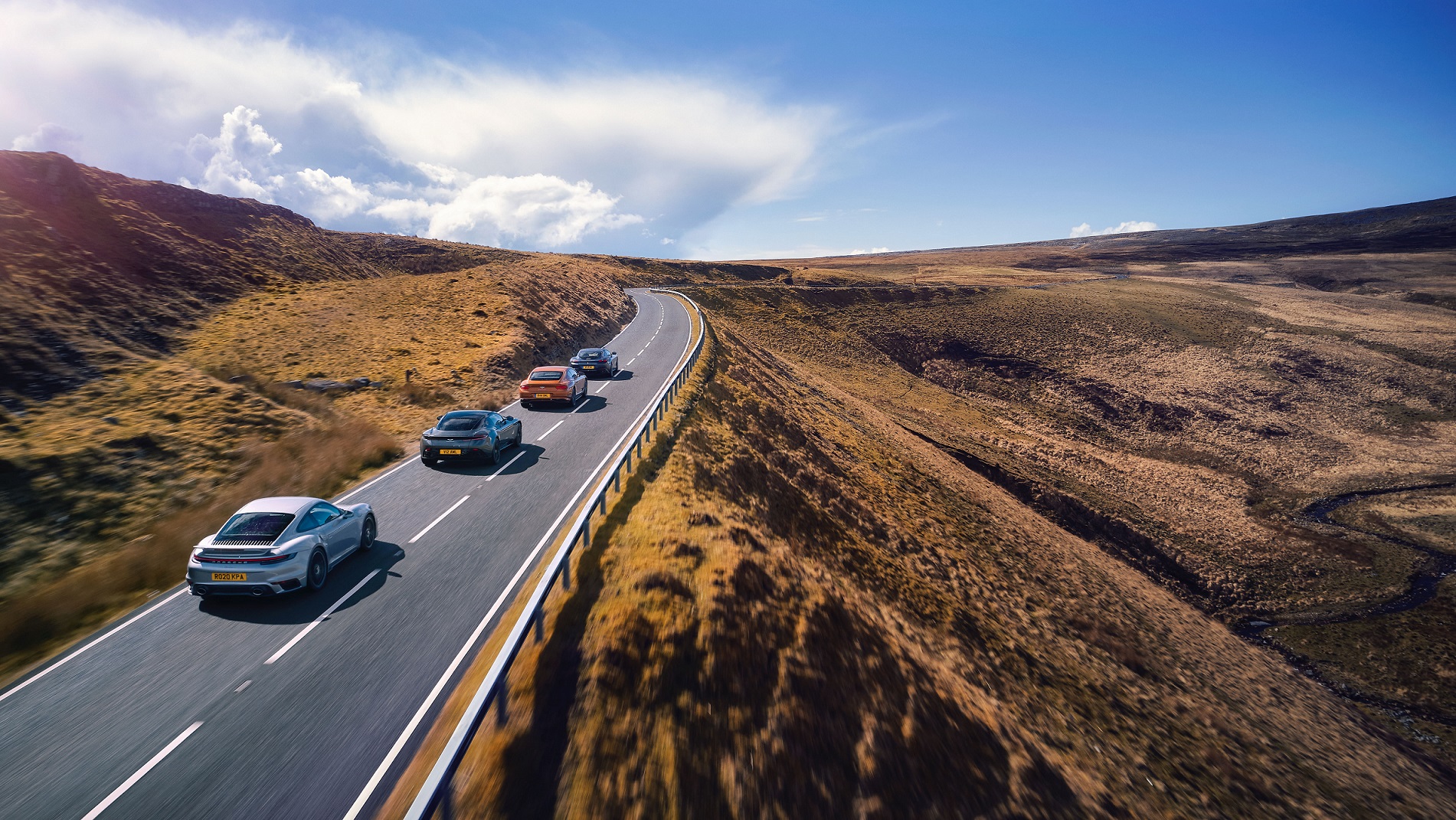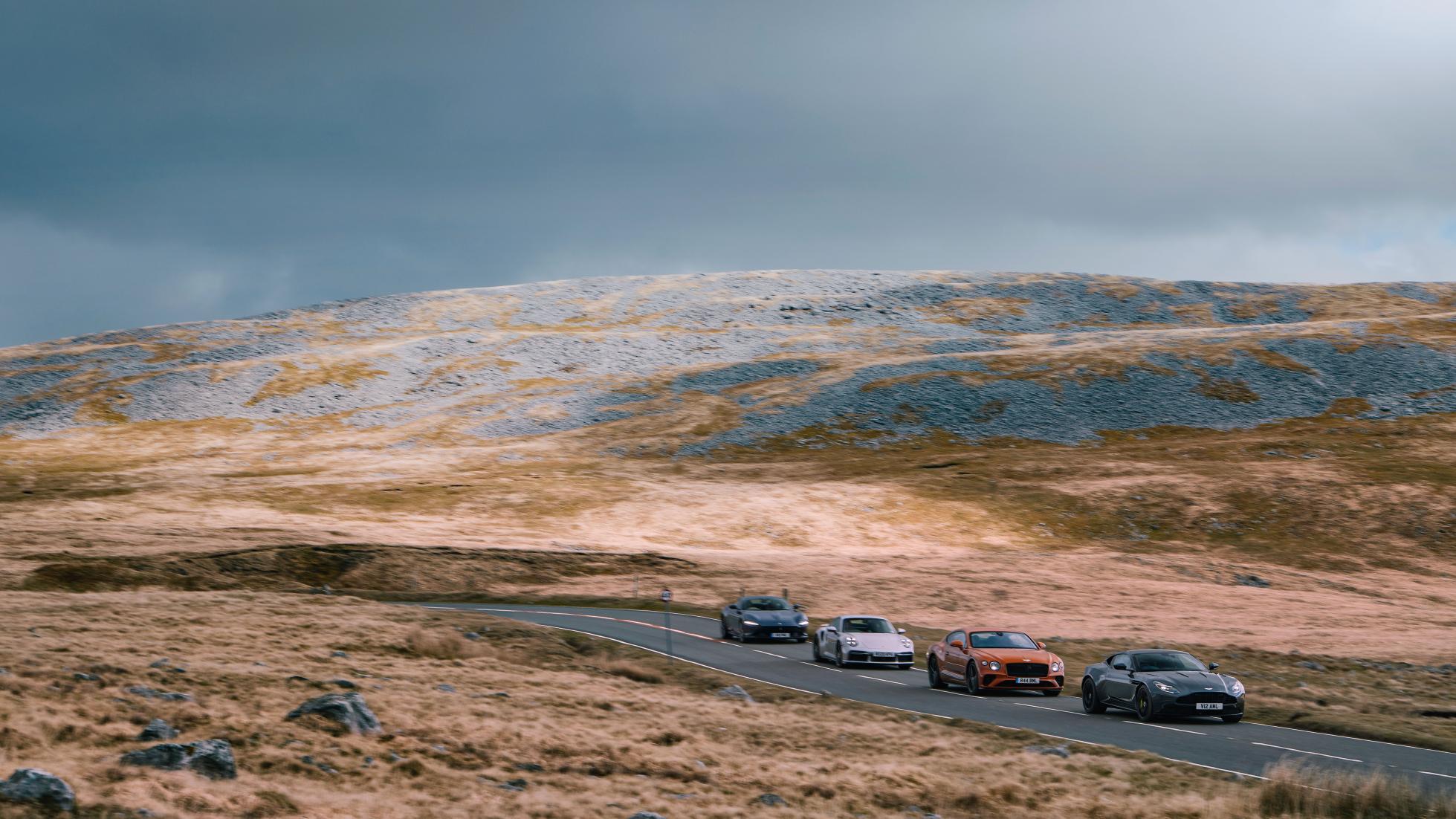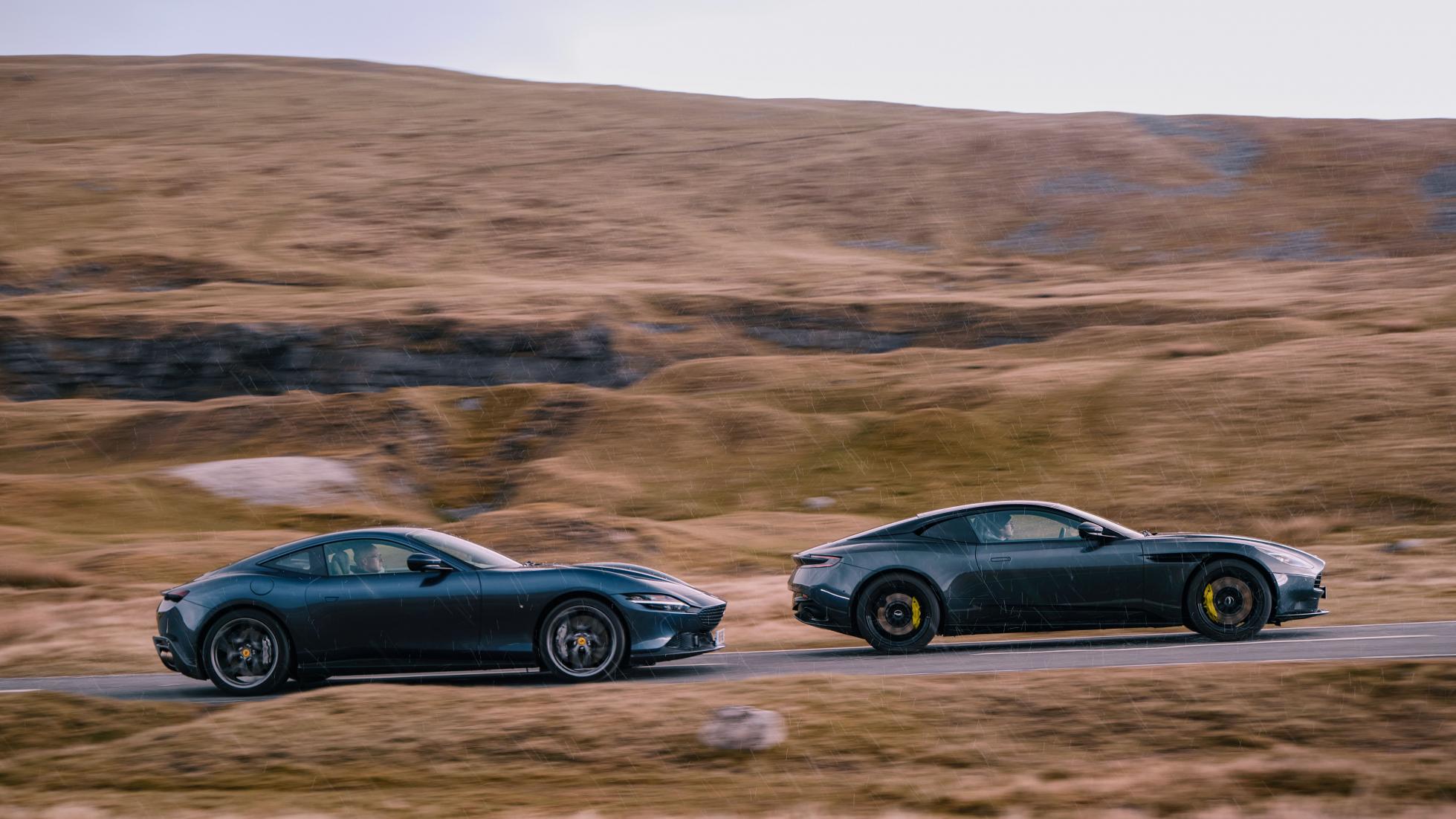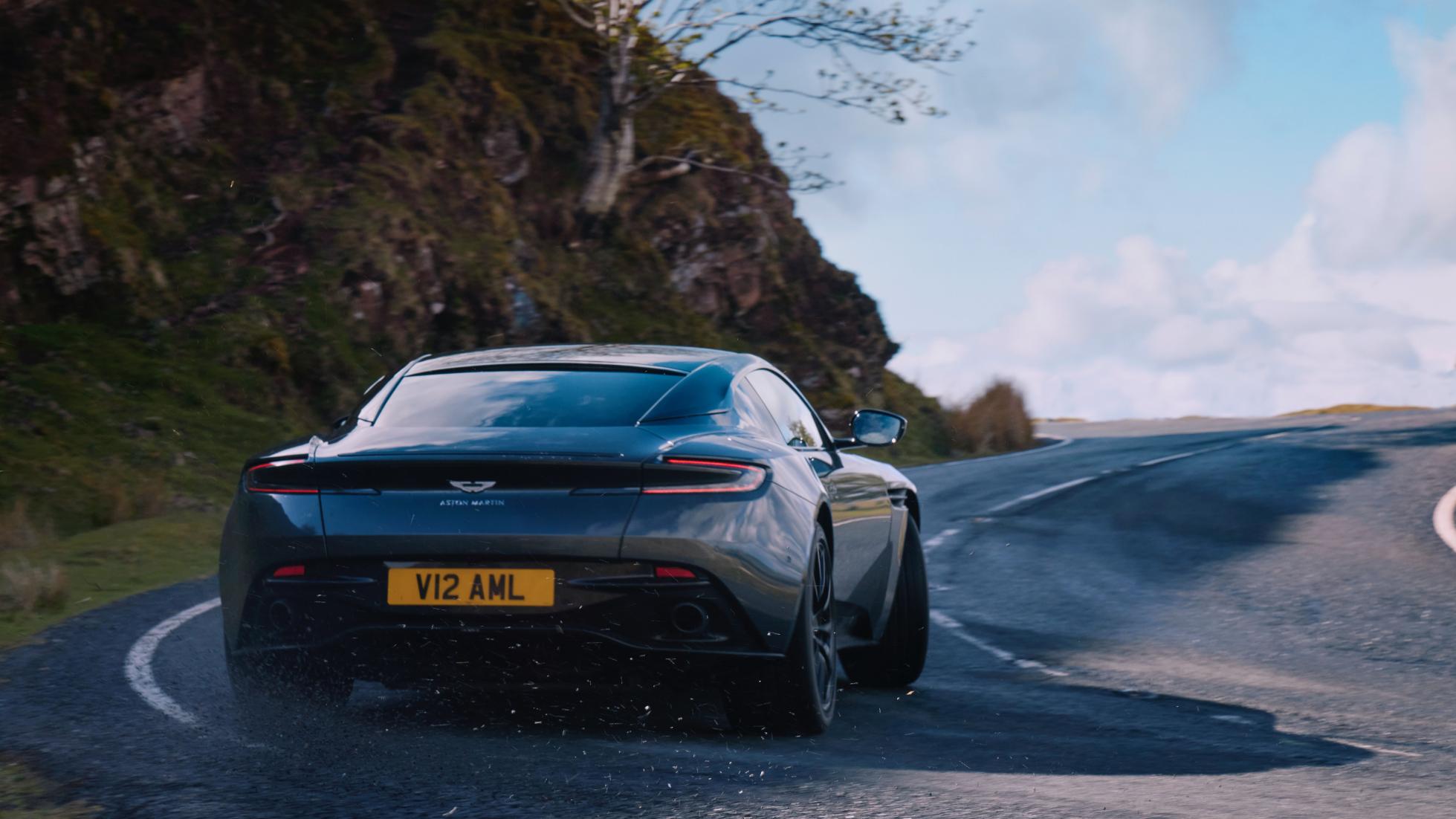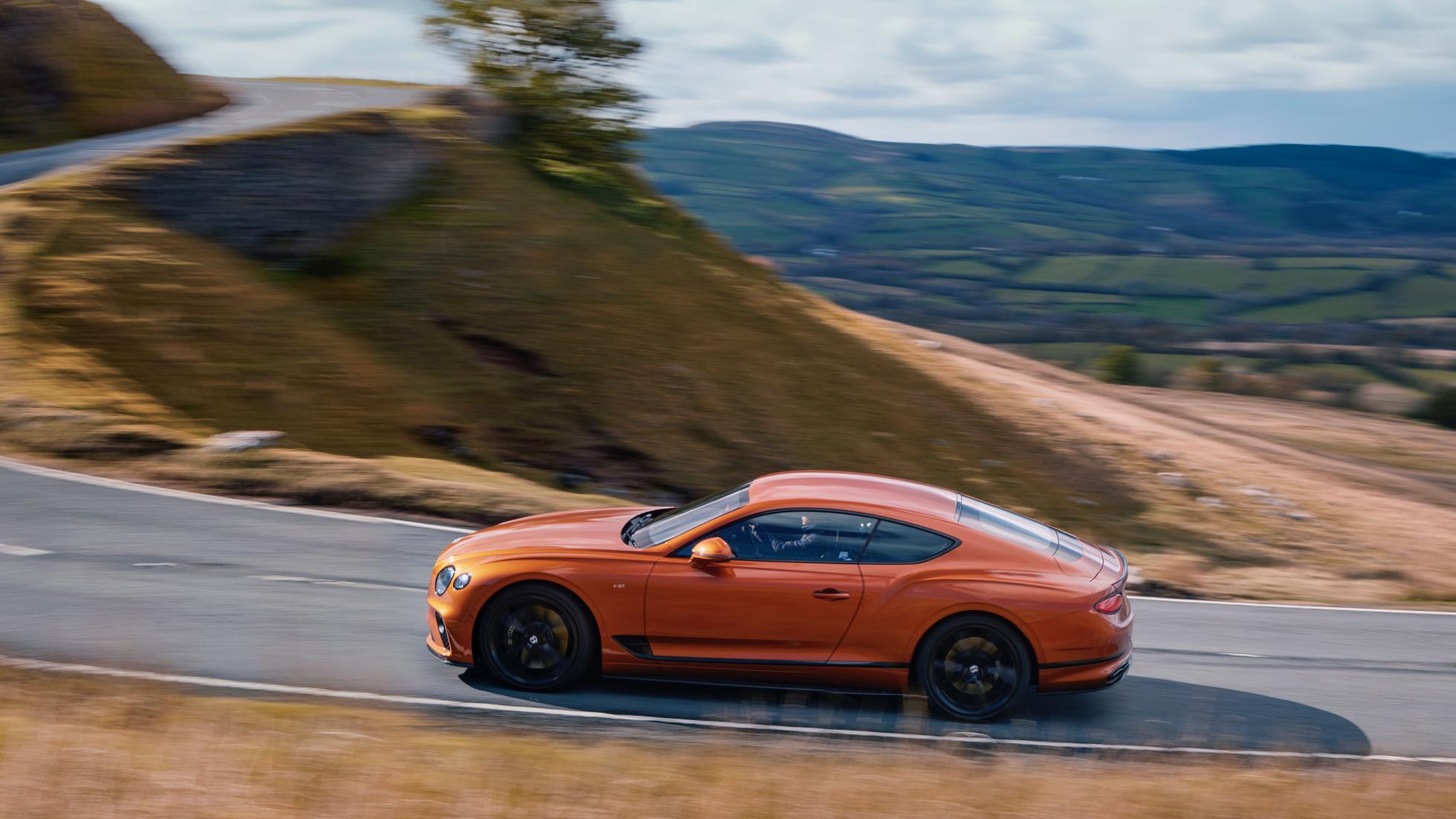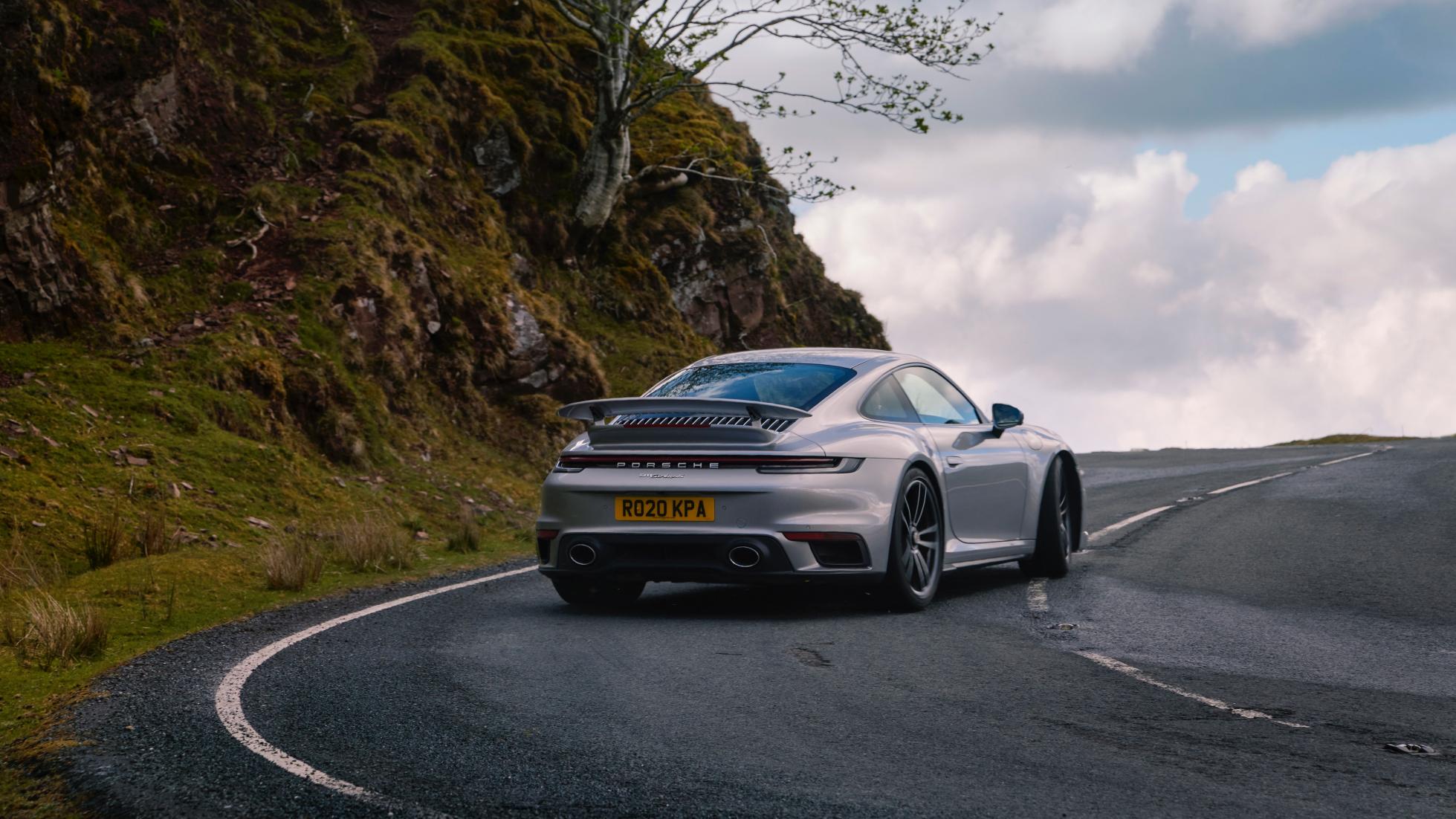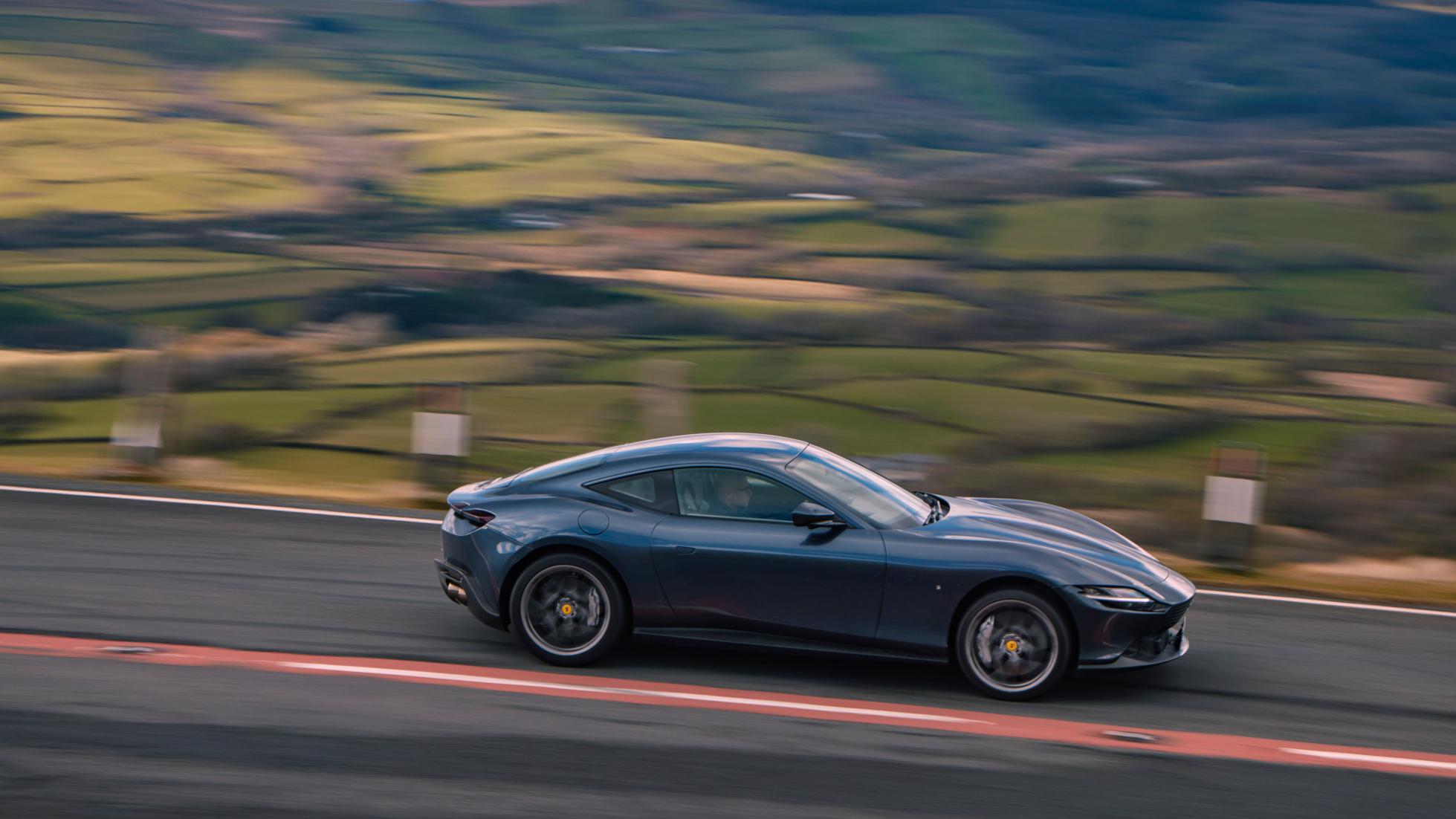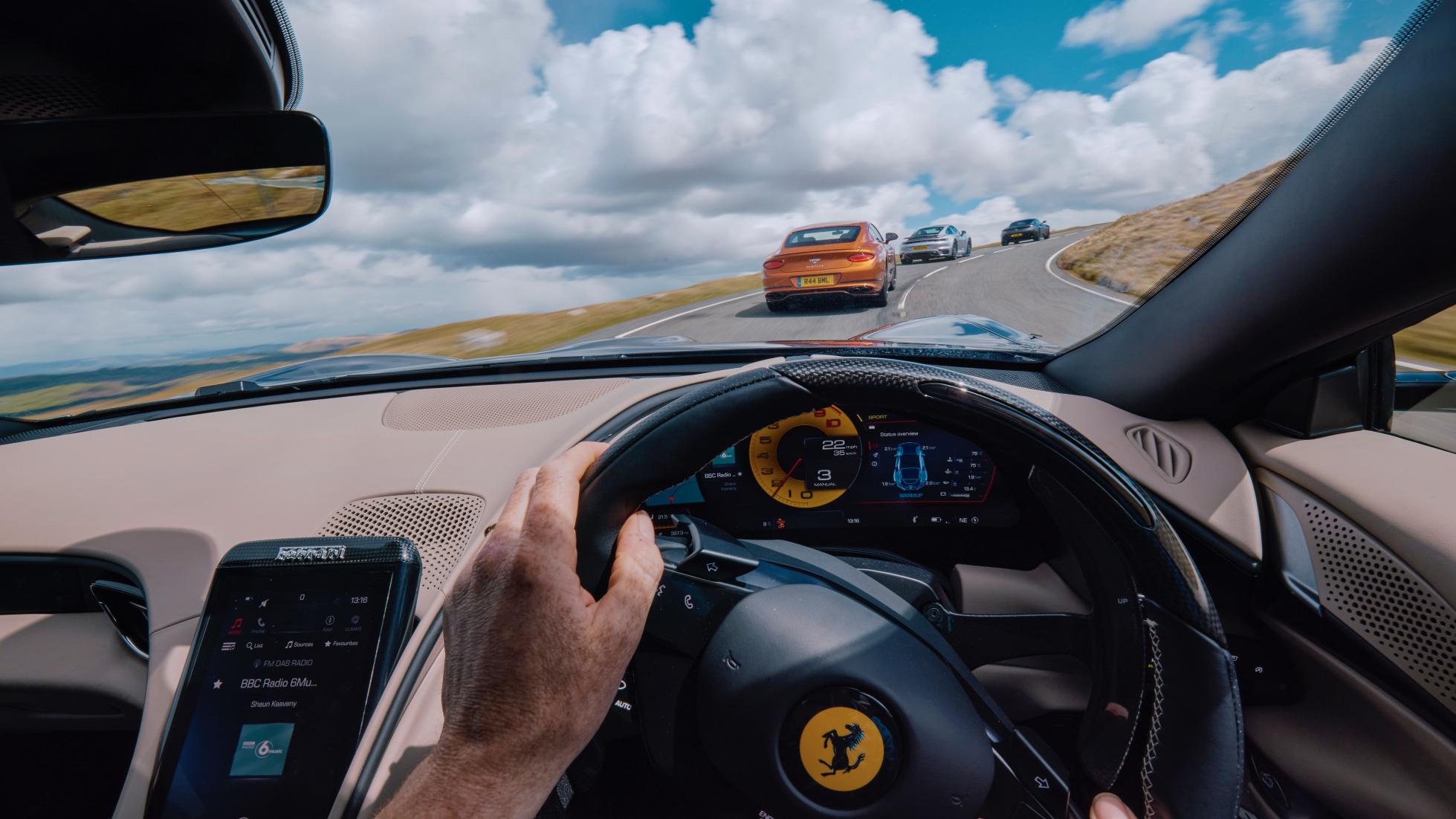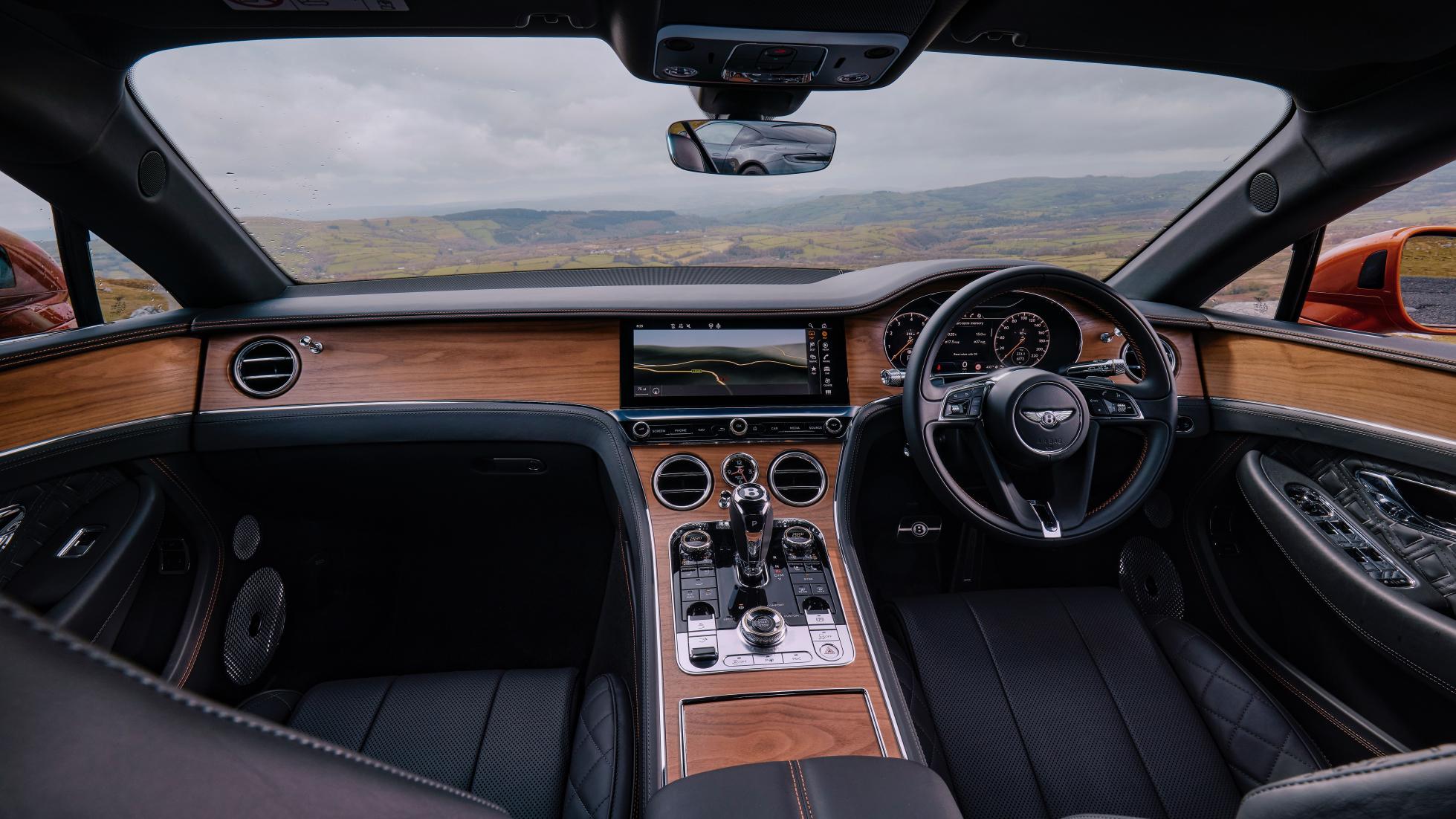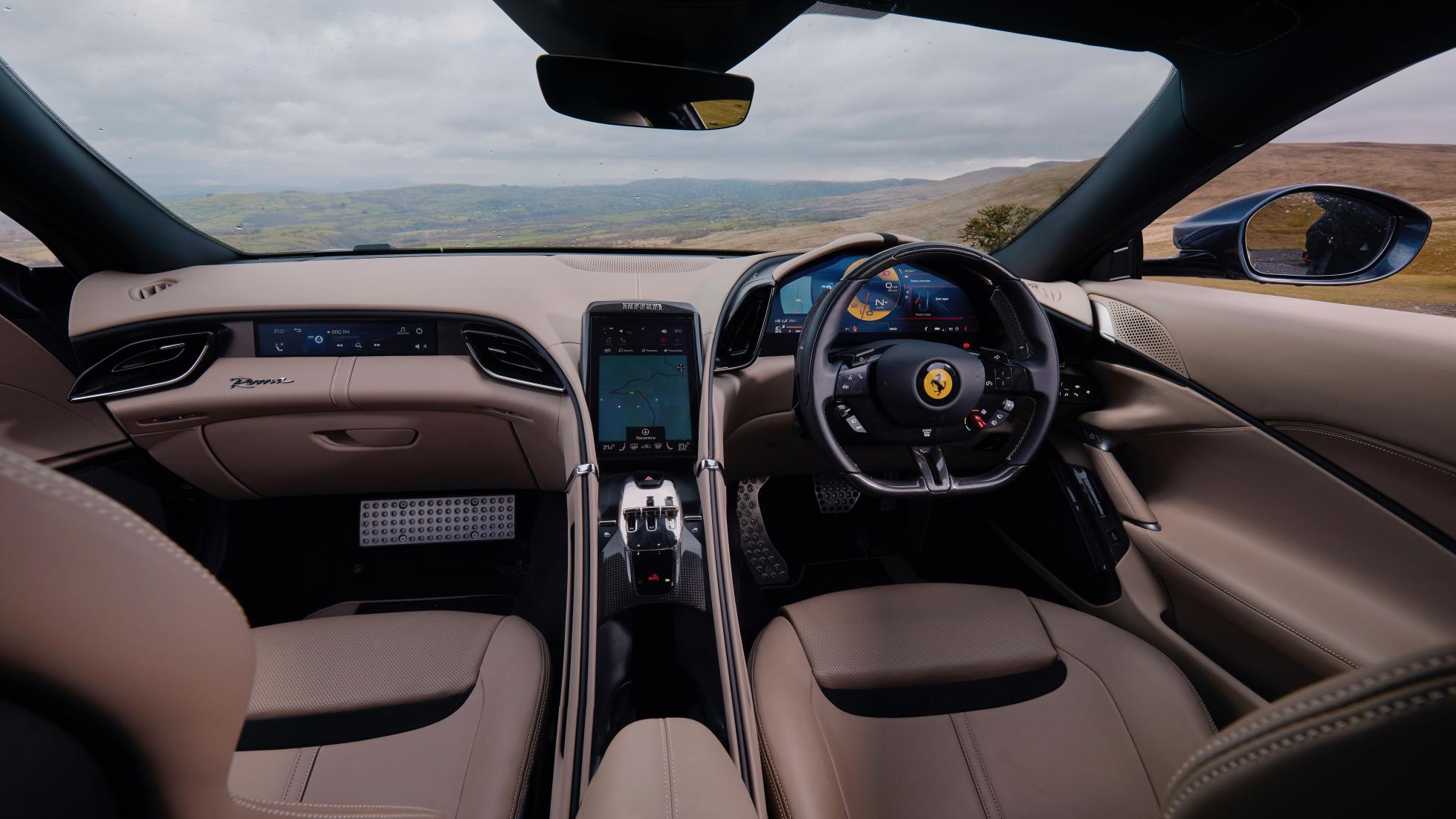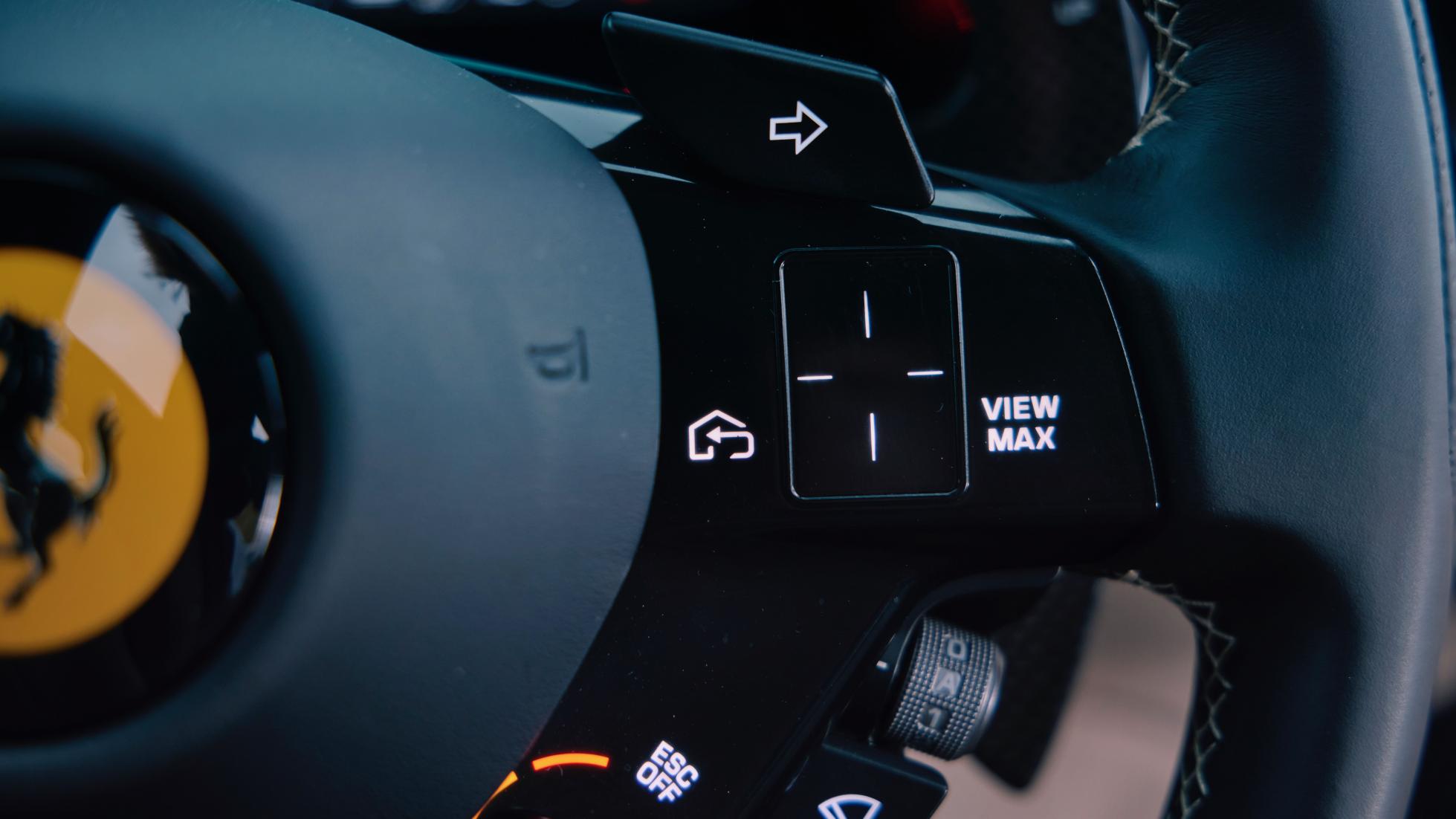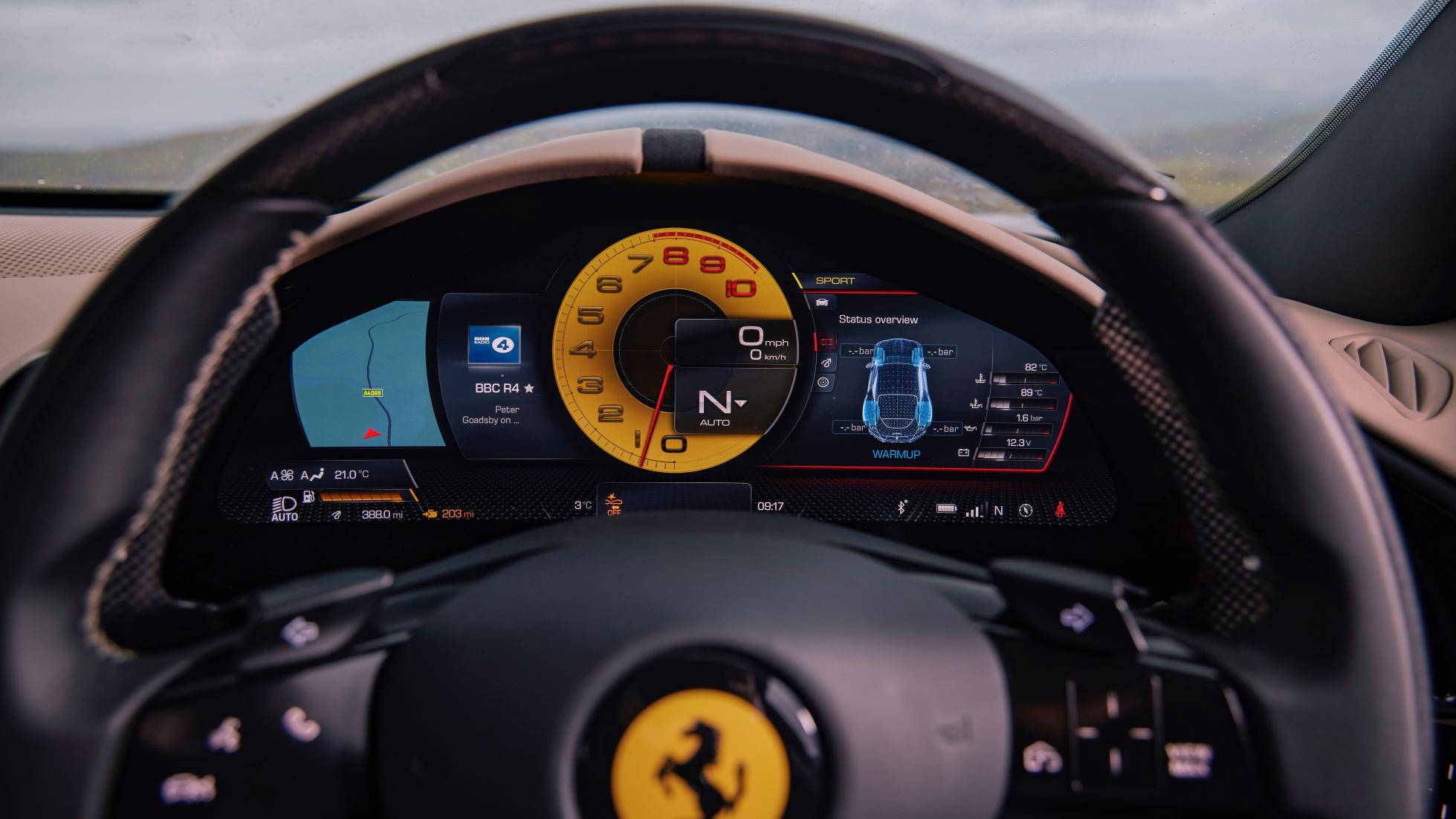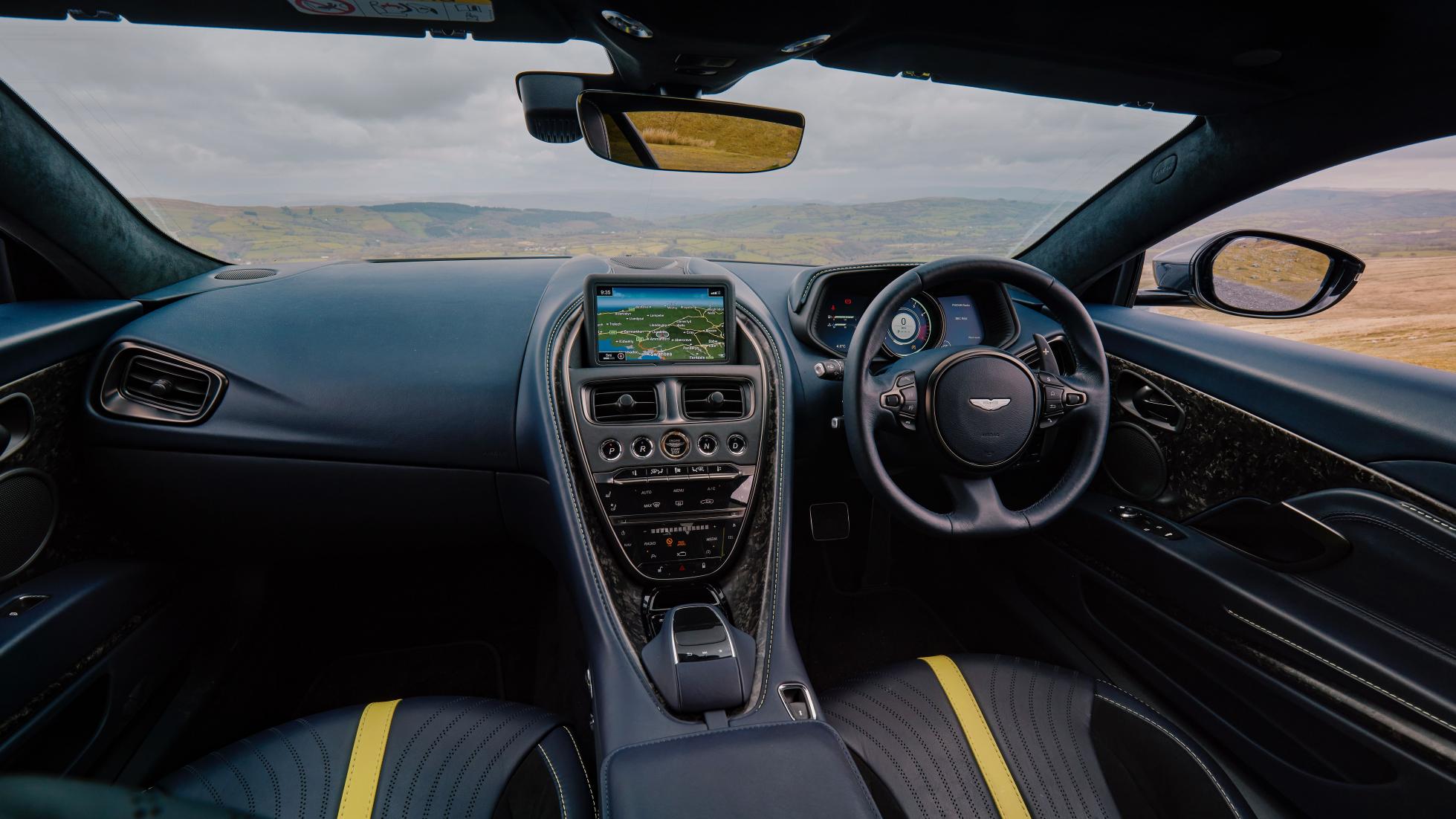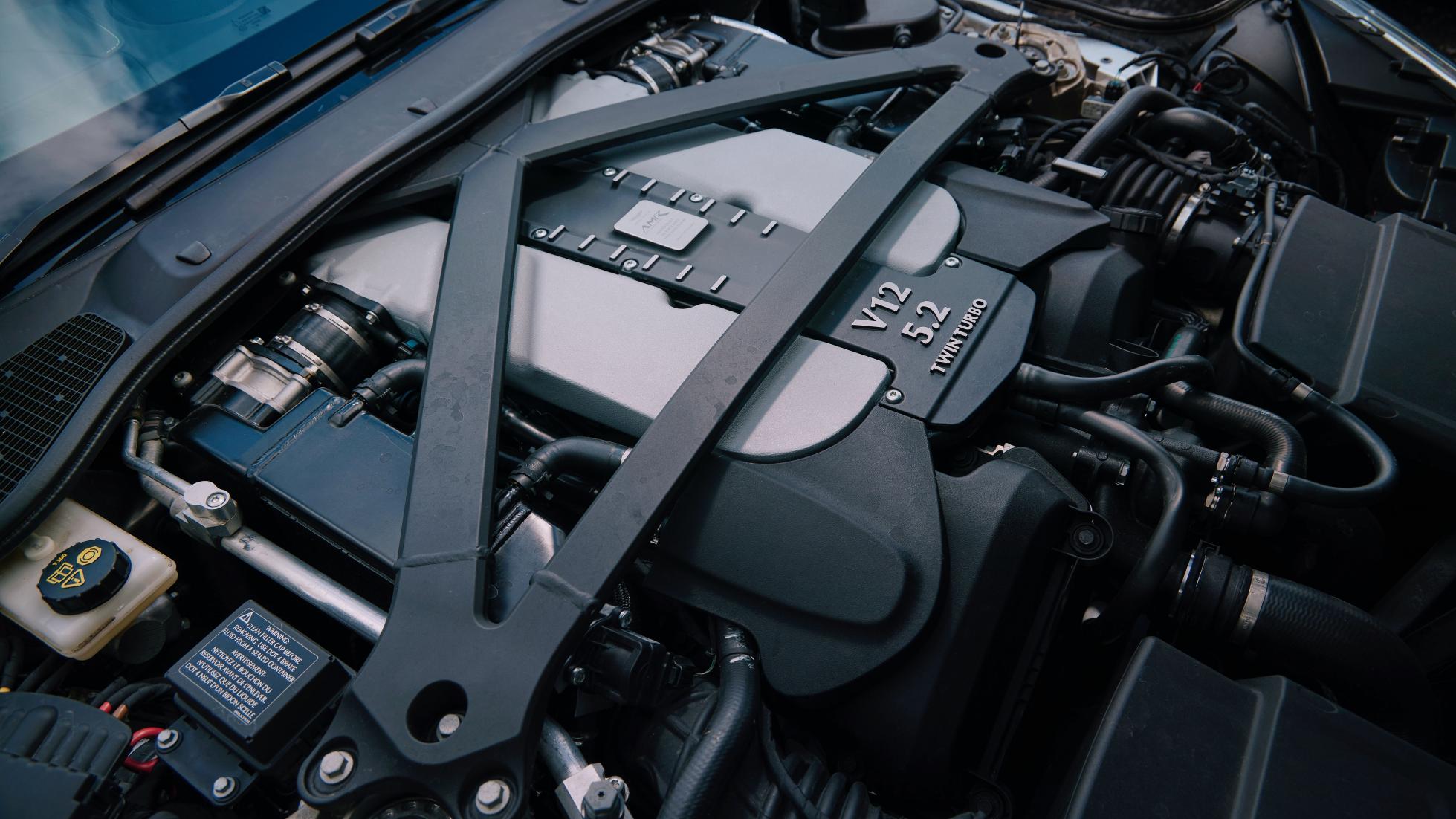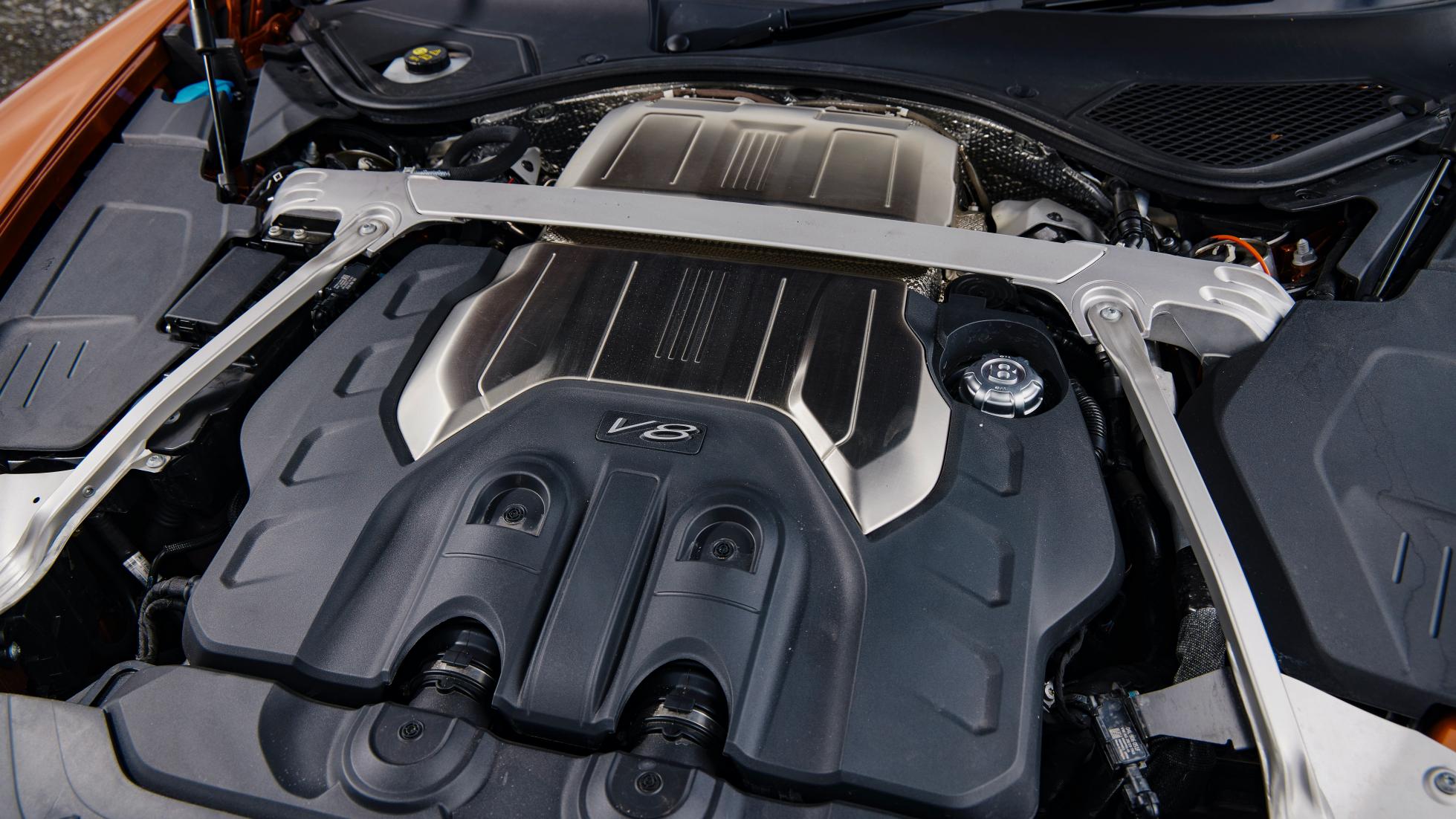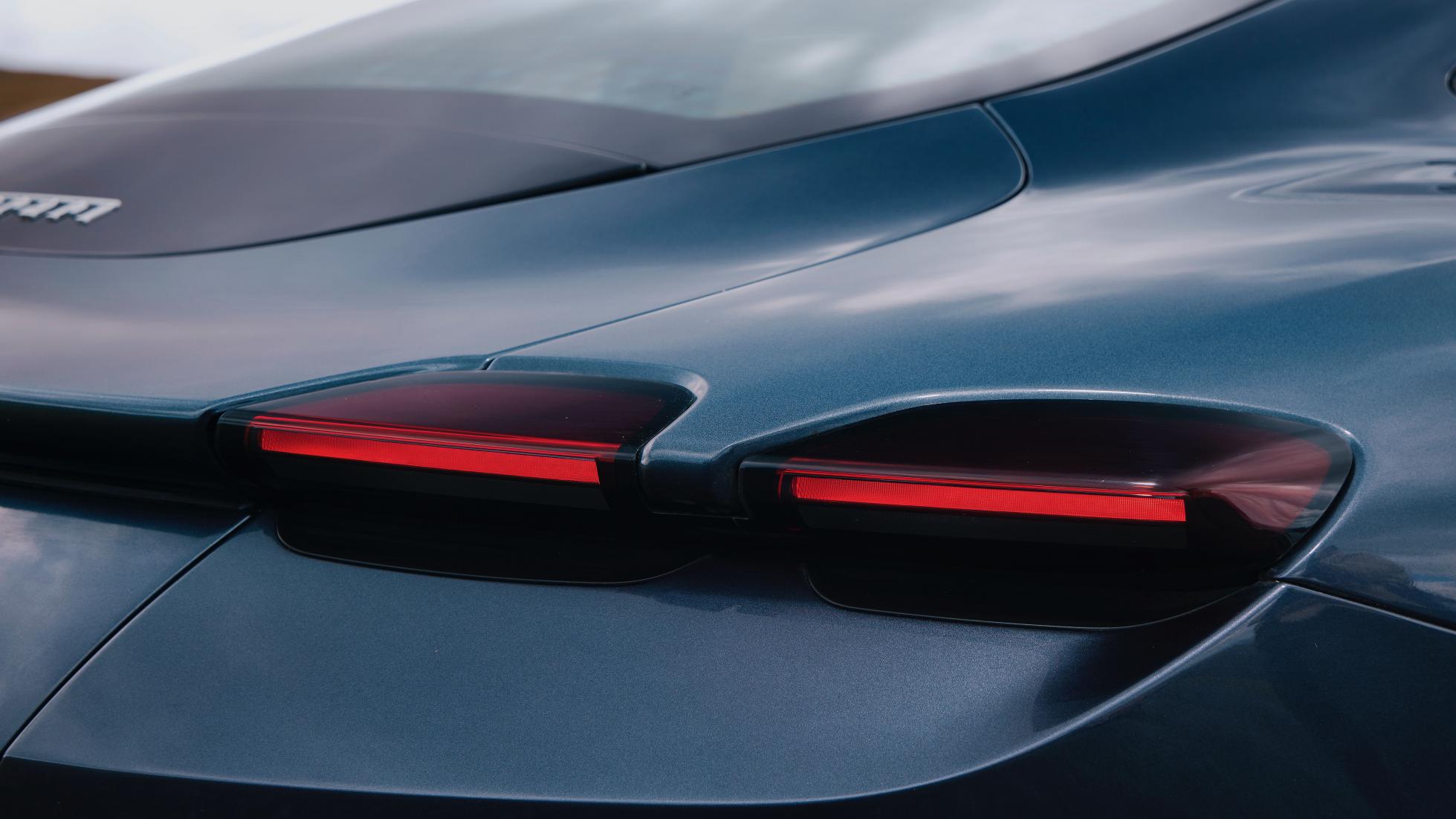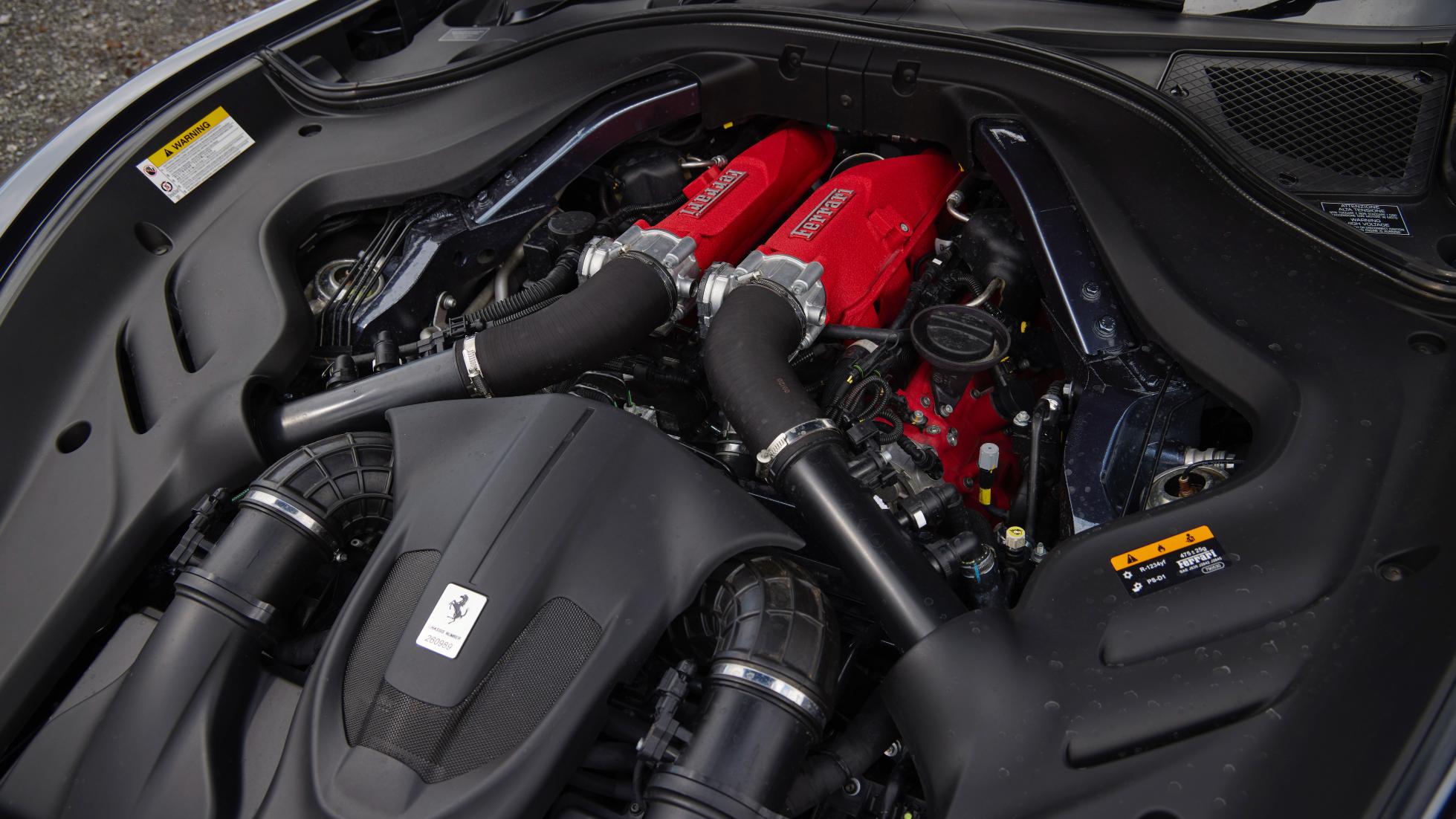Ferrari Roma vs Aston DB11 vs Bentley Conti GT vs Porsche 911 Turbo
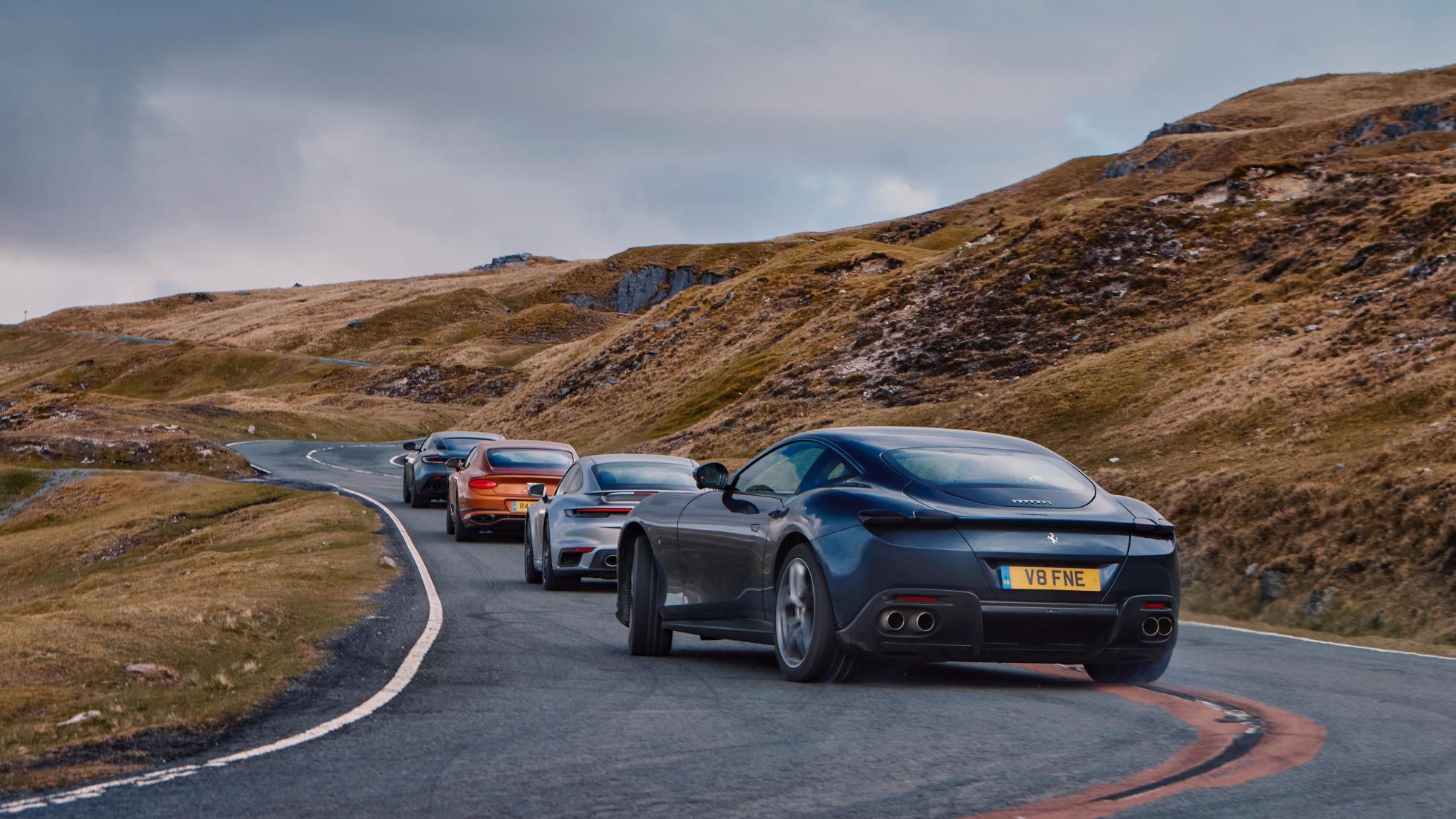
It’s very highly caffeinated, the Ferrari Roma. But that’s fine, because it’s 7am now and thanks to a bubbly barista at Cardiff West services, so am I. But two hours ago I wasn’t. The Ferrari, however, still was. And at 5am that wasn’t ideal.
So before we do anything else, we need to discuss what our expectations are of these cars and how they behave. This used to be easy. These are Grand Tourers. Insert two plus luggage, point prow at Antibes, pitstop at Reims for a crate of Champagne, dinner at some place with stars in Lyon, apply noggin to pillow, repeat the next day. But no-one’s diet plan permits a contented belly-waft through France these days. And besides who drives all that way?
You’ve heard all those old tropes before. GTs are dead and gone. The truth of the matter is that all these firms actually do build grand tourers. Only they’re called SUVs. Ferrari’s will be along shortly. The role of an actual grand tourer has changed. These cars, although built for that job, actually do another. They’re the Monday-Friday exotica, do the things everyone else does, just more raffishly. With a sideline as supercars for the hip-replaced. Except the Porsche. It’s quite a drop for the buttocks that one.
Ease. That’s the key. They should make the business of getting about and using them hassle-free. Connect and engage when you want them to, but know when to pipe down. Follow your mood, in other words. So for three days that’s how I used the Roma. Followed the M4 coneworks in and out of London, folded the back seats to fit guitars, put them back up for small nephews, did runs to the pub, supermarket, school. Then on a Tuesday morning got in and drove a very long way, very early in the morning.
All told it hadn’t been particularly easy or hassle-free. It was the low level irritations: the letterbox load bay opening that leaves the bootlid at perfect headbutt level, the purpose designed phone slots that are too slender if your phone is wearing a case, the seatbelt alarm that sounds if you put anything heavier than a wallet on the passenger seat. And the not so low level irritations: how effectively the A-pillar and mirror block visibility at junctions, the reflections that render the centre screen practically invisible, the awkward thumb pad that ‘controls’ the instrument binnacle. And why, when you change the volume, don’t the sound levels change immediately? There’s a marked delay, enough time for you to think the change wasn’t registered, jab the screen a bit more and then jump out of the – overly firm – seat when the system catches up.
All this stuff matters because it makes operating the car a trial. Interactions with the Roma aren’t seamless, you have to think, process, it takes mental capacity which should be purely focused on the driving. Which brings us back to where we came in. Because this is a car that demands your full attention once you start moving. But it’s hard to do that when the cabin is also asking quite a bit of you as well.
We know this isn’t necessarily a grand tourer, but we also know it’s designed to do a gentler job than the mid-engined F8 Tributo. In my head that meant it was more along the lines of the GTC4Lusso, and that chimed with the cars Ferrari claims are rivals. The ones you see here.
There’s the Porsche 911 Turbo S, the most powerful machine in the line-up, the definitive everyday supercar and our performance car of the year last year – quite a compelling double act. It’ll test the Roma’s driver appeal and everything’s usability. Hardly a bargain these days though – it’s more expensive than the Bentley Conti GT V8. Until you start shovelling essential options into the big Brit. However there’s a car that understands exactly what job it was designed for better than any other here. Show it an autoroute and it would sniff out Antibes like a truffle-hunting hog.
The Aston is closest in packaging, layout and general demeanour to the Ferrari. Not only because it’s low, rakish and prowling, but also irritating to operate. Not quite up to Roma standards as the steering wheel controls are logical enough, instead here it’s the cramped layout and ageing Merc-sourced infotainment interface that winds you up. It feels the most cottage-industry of these four, but it’s a lovely car to settle into, soft seats, wonderful V12 growl when you start up, but you do soon notice slight wrinkles in the operating experience – and the leather.
In the Ferrari, leather is stretched so taut you can see imperfections in the substrate beneath (I assure you that any conclusions you might draw from this about potential owners are purely intentional). The Bentley does it best. The air of all pervading luxury and quality is easier to achieve when you’re not worried about how many kilos are being piled on. The Conti is the only one that you’d even consider trying to persuade an adult into the back of, is the most generous, the most imposing and, despite the sheer number of buttons, as easy to operate as the Porsche.
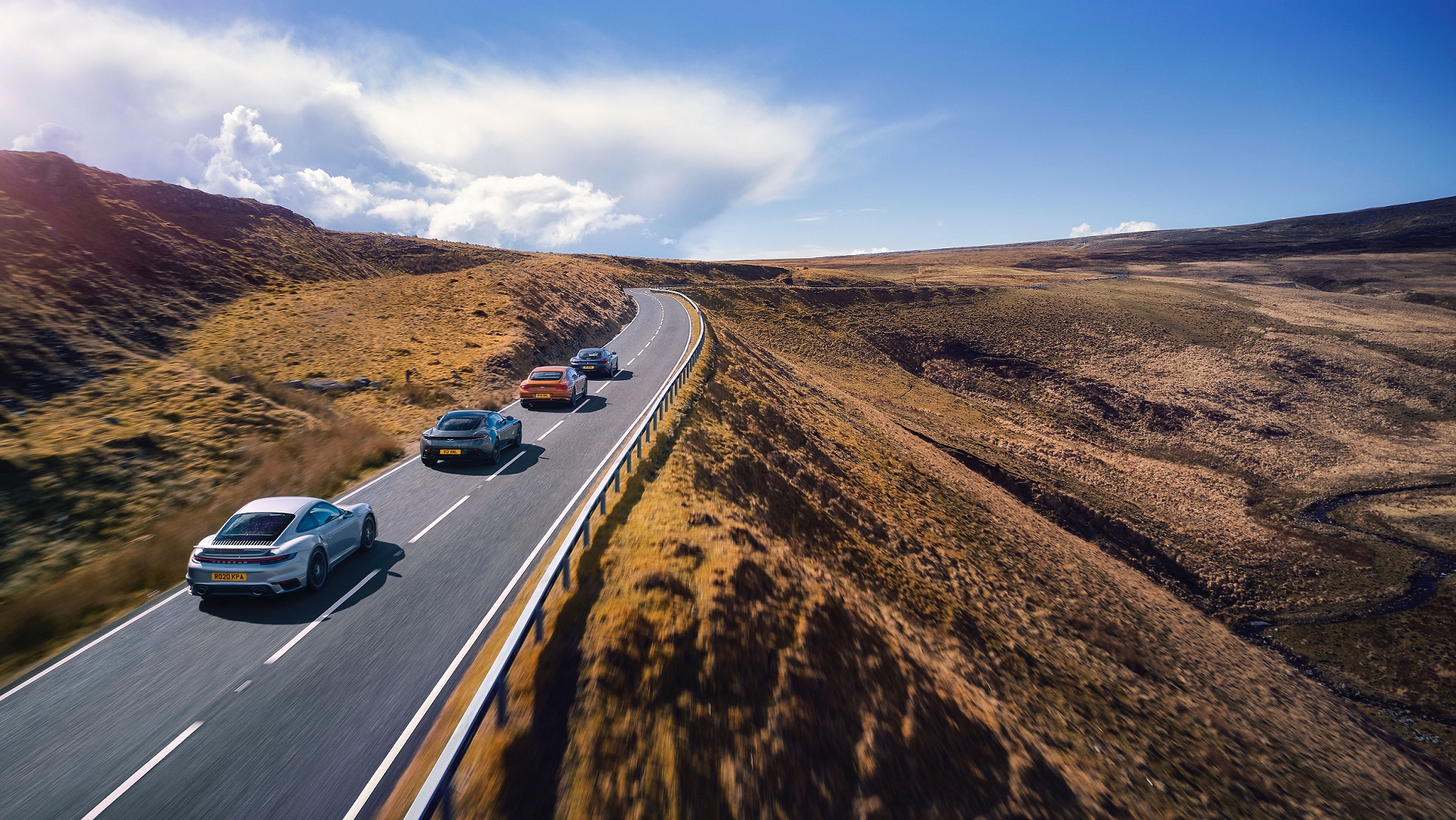
Low slung it might be, but the 911 Turbo S is just so damned habitable. OK, it helps if you’re tech savvy as there’s a lot of screen management to do, but the basics are impressive. Instead of the Ferrari’s frustrations, here you nod with appreciation at the all round visibility, the masterful packaging, the cabin organisation. Both it and the Bentley make you realise what’s possible when you have VW as a sugar daddy to keep you in development budget.
Dawn, and the Roma wakes like a startled cockerill, shrilly announcing its presence. The first few kilometres are irritating. I’m bleary and just want this car to get me to Wales with no effort, but it’s way over-eager for this time in the morning. It’s better once settled on the M4, but there’s road noise and the whole car is too active. All the others, I’ll discover later, have better motorway manners. The Porsche is noisy but composed, movements instantly controlled, the Aston purrs through kilometres authoritatively, and the Bentley is just so commanding, seeming to take control of the situation and demolish distance without you being remotely aware of it. And do so far more efficiently than you might expect: 10.9l/100km after 400 kilometres, against 13.5l/100km for the DB11, 14.1l/100km for the Roma and 9.4l/100km for the 911.
Dark clouds storm over Black Mountain, depositing wind, rain and hail, then just as quickly flee away, leaving the landscape with a freshly washed lustre. It’s perfect testing weather, on perfect testing roads. The tarmac is smooth as it rises up from the valley and, fully caffeinated, I’m now in tune with the Roma. It loves a well laid road, turning in eagerly and incisively and whipping through corners with little effort. The steering is super quick giving the front end a dart-like feel, and the throttle is equally immediate, ensuring you’ve got immediate torque on demand. It’s an incredible engine. Not the most melodious, but easily the most responsive across the mid-range.
But as the road climbs higher it narrows and deteriorates. And now the Roma’s effortless eagerness starts to work against you. The ride loses its fluency, starting to buck and squirm, which makes it hard to plan your inputs, inputs that – with no play in the steering and throttle – are magnified. Suddenly you find yourself juggling a lot of activity and having to be very precise about it. It’s what I’d expected from the way the Roma likes to jink across motorway lanes, flit around roundabouts, but up here it feels unsettled. Don’t get me wrong, I have utter confidence in the front end’s ruthless bite, but the rear end can’t keep up, doesn’t have the same grip and composure, and yet the motor still wants to get all 760Nm out every time you brush the throttle. Which means oversteer and the traction control clacking like castanets.
You can of course drive slower, but the Ferrari never stops reminding you it wants to go faster. On smooth roads it’s mighty but I can’t help thinking that making it as agile as an F8, but without the chassis sophistication and low centre of gravity fluency, is a mistake.
I swap to the Aston and repeat the road. It’s a very different experience. I can swing the steering and in return get a more measured, calmer response, but again the rear axle lets it down. It squats and lurches, needs to be given time to settle. Now instead of desperately trying to keep up with the frenetic pace, you’re ahead of it, trying to encourage more from a car without the body control to keep up. This is a car that would love to take sweeping N-roads through France, give voice to that mighty twin turbo V12. It’s a car to guide with your fingertips and sweep languidly along, not pick out apex points.
So to the Bentley, with the surprising sideline that it will charge way better than you expect. Well, until you hit the brakes with the same vigour you’ve used on the other controls. They bite well the first few times, but then 2,090kg of physics takes over. The V8 has less inertia than the W12 and forces the big coupe down the road with more punch than you expect. Plus it has a chassis that can keep pace. It will understeer eventually (wait for the forthcoming Speed version if you want to counteract that), but body control is deeply impressive. What’s missing is connection, dexterity and feel. It’s a big, heavy car and can’t disguise itself on small, narrow roads. Think of it as the all-terrain GT. As long as those terrains are tarmac, it’s got you covered no matter how shambolic the surface.
The 911 Turbo is wider now than it’s ever been, and yet in this company it still feels like a small car. The two Brits are broad on these roads, the Ferrari so over-agile it needs constant correction. The Porsche is the fastest machine across the ground by a very wide margin. You sit low, keyed into the tarmac and connected to it. Corners are ruthlessly dispatched, you brake deep into the apex, then power out, all four wheels sharing the load. It likes to be tested, to get its teeth into the road, to show what it’s capable of. But it doesn’t need to behave like that to reward. The controls all operate pitch-perfect, so you get satisfaction at any speed. Yes, there‘s turbo lag, it doesn’t have the Roma’s reactive immediacy, but the thump is worth waiting for, you tingle with anticipation during the build-up to the boom, the explosion forcing laughter from your lungs.
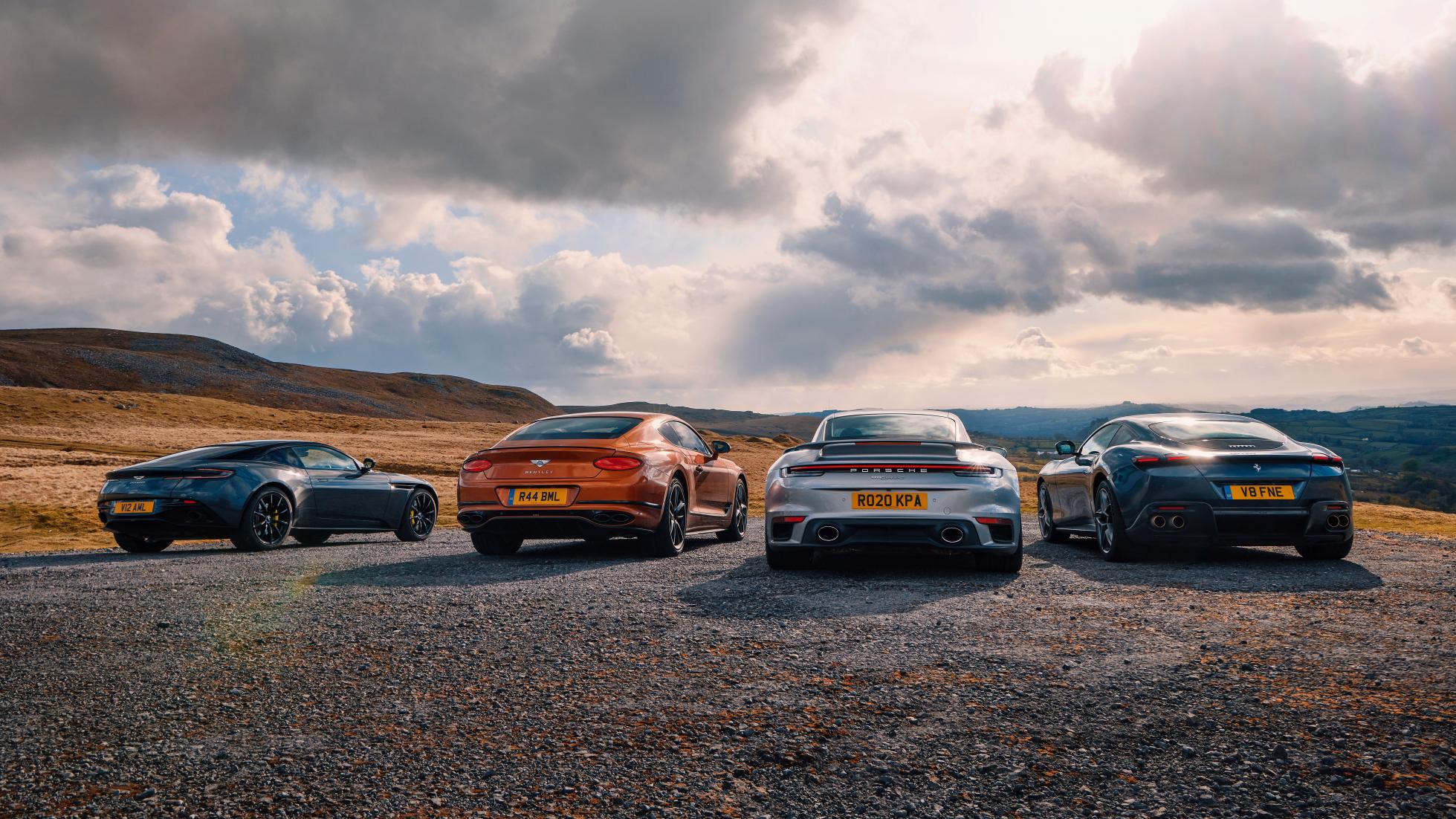
The 992-gen 911 Turbo is more aggressive now than perhaps ever, but although firm, because wasteful movements have been purged from the chassis you get control without the distraction and waywardness that characterises the Roma. It works with you better than any other car here.
I think it’s useful to consider these cars from a passenger’s perspective. So I carried people and asked them what they thought. First choice, unsurprisingly, was the Bentley for its unruffled dignity and road flattening nature. Last was the Ferrari. Even travelling at modest speeds its trumpeting keenness made passengers feel on edge.
I’m not sure what role Ferrari envisions for the Roma. It’s not the car I thought it would be. I assumed it would follow in the GTC4Lusso’s long-legged footsteps, but instead it’s more like a V8-powered 812 Superfast, anxious and sudden. The triple-shot espresso road manners mean it takes a lot of managing and that makes it far more tiring to drive than its rivals. And the cabin just doesn’t function well enough, it grates on you when it should soothe. I’m not even persuaded that it’s particularly stunning to look at. Nice from the rear, but I think Aston does the long bonnet stuff more elegantly. Pity that the DB11 feels off the pace in terms of quality, kit and body control. It’s ageing fast now and slips behind the Ferrari into last place. The Bentley and Porsche are very different cars, but they occupy the top two slots. Still see a role in your life for a genuine grand tourer? The Conti GT is by far the best choice if Antibes beckons. For every other daily supercar need, Porsche has you covered. The 911 Turbo is an astonishingly complete car.
Words: Ollie Marriage

